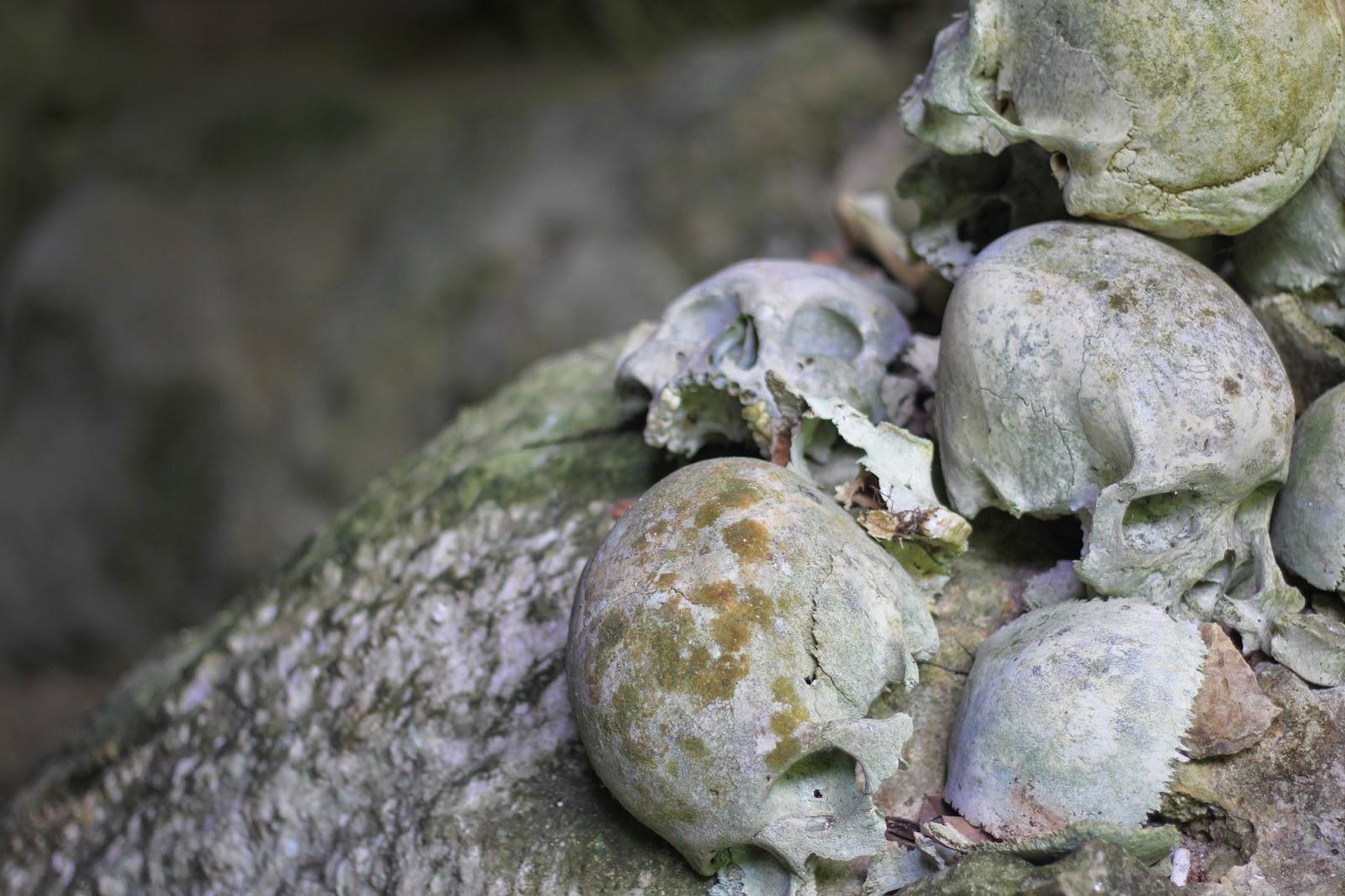Attending a funeral was the reason that we traveled to Toraja and we accomplished this on our second day. As in the States, Black is the funeral attire for the region but is often embellished with red (symbolizing blood) or yellow (symbolizing the power of God). Young family members of the deceased, clad in beaded traditional clothing, lined the entrance to the family tent in the center of the elaborate arena which was especially constructed for the funeral. Upon arriving at the funeral, guests were provided with refreshments and seated according to family in a numbered pavillion. Funerals are a community affair, with the family of the deceased being responsible for entertaining and feeding their neighbors for the duaration of the celebration. Another group of men related to the honoree gathered in a circle to chant and sway in rememberance.
After an hour or so, the festivities got under way. The coffin was laid under a traditional boat house, which male family members hoisted up on bamboo and took for a walk through the community (in this case, down a very steep hill and back again), while female members took hold of a red cloth and led the way. Since so many men were working together to carry the sarcophagus, it became a massive game of tug of war, with the coffin at times dangling precariously close to falling over.
Guests of the funeral are obligated to bring offerings, often in the form of pigs or for the wealthier, water buffalo. Upon arriving, guests must pay a tax for the animal. As you can imagine, the volume of pigs that were brought combined with a tight space, made for a loud, pungent affair. Often, a pig, who was still bound at the ankles or around a bamboo pole, would attempt to reposition itself before failing and falling on some of the other swine, and what started as one loud oink, quickly dominoed into a chorus of miserable pigs.
Eventually, it was time for the sacrifice. A beautiful water buffalo was led into the center of the arena by his nose and tied to a tree. Having done my research, I knew what to expect but as soon as it started, I had no idea how hard it would be to watch.
**Graphic Content Below**
As a man approached the creature with a gleaming machete, the atmosphere of the crowd shifted. I expected one swift movement of the blade would do him in but unfortunately for the animal, a few moments of sawing passed before he began to gush. It was not a quick death. What struck me the most was how loud the blood flow was. The water buffalo thrashed, eyes bulging, as it came to terms with the situation. After several long minutes, he gave up and in a pool of his own blood, took his last breath. More disturbing than the slaughter was the group of children that approached the animal after he was gone. They giggled to each other in their local language before pushing one forward. That child began to play with the lifeless eyeballs in front of him, as if they were a prize won from a machine.
We witnessed this not once, but twice. The second animal that was offered was less cooperative. Due to the volatile nature of the creature, they resorted to covering his eyes to make him easier to handle.
Once the slaughters were finished, a parade of family members walked the outskirts of the arena before settling in the family tent. Others followed and presented their gifts to the family.



























































